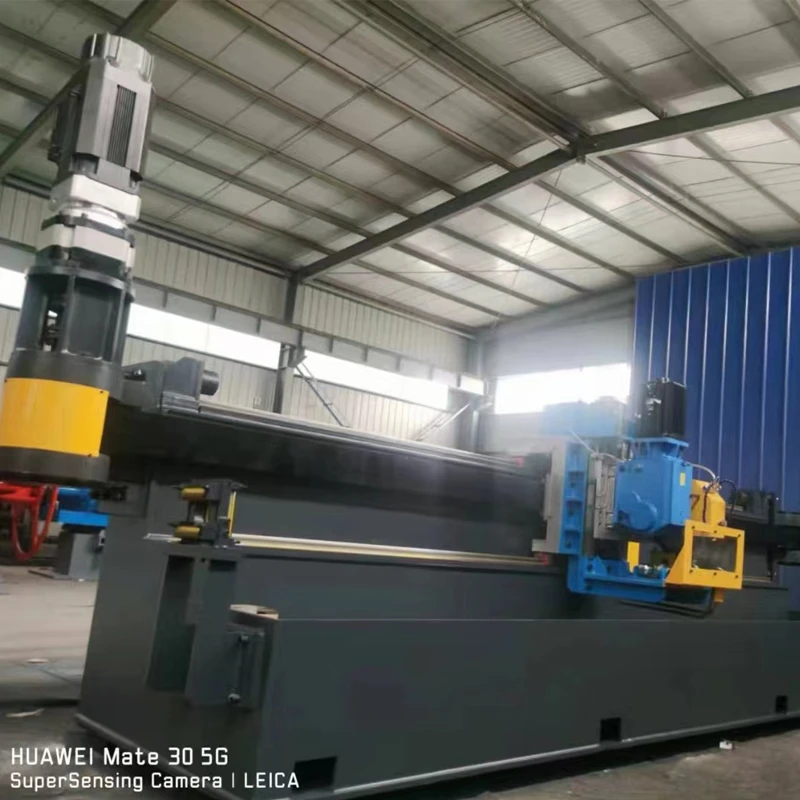Steel Coil Uncoiler for Efficient Material Handling and Production Optimization
Understanding the Steel Coil Decoiler A Key Component in Metal Fabrication
In the fast-paced world of metal fabrication, efficiency and precision are paramount. One of the unsung heroes of this industry is the steel coil decoiler. This essential piece of equipment plays a significant role in the processing of steel coils, ensuring that the material is available and ready for further processing. In this article, we will explore the function, benefits, and operational features of a steel coil decoiler, as well as its impact on the manufacturing process.
What is a Steel Coil Decoiler?
A steel coil decoiler, also known as a coil unwind or coil opener, is a machine designed to unroll steel coils in a controlled and efficient manner. Steel coils are large rolls of steel that are produced through various methods, including hot and cold rolling. These coils can be heavy and often require handling equipment to process them effectively.
The decoiler feeds the steel coil into other machinery for further operations such as cutting, punching, or bending. The decoiler works by holding the coil in place and gradually unrolling it as needed, minimizing any stress or damage to the steel.
Benefits of Using a Steel Coil Decoiler
1. Increased Efficiency Decoilers significantly enhance the efficiency of metal fabrication processes. By automating the unrolling of steel coils, these machines reduce manual labor and minimize downtime, speeding up production times.
2. Precision Handling Steel coil decoilers are designed to handle coils of varying weights and diameters with precision. They often come equipped with control systems that allow for accurate feeding rates and alignment, ensuring that the material is processed without defects.
3. Improved Safety Manually handling large steel coils can pose safety risks to workers. Decoilers mitigate these risks by mechanizing the unrolling process, allowing for safer work environments. Operators can remain at a distance while the machine handles the heavy lifting.
steel coil decoiler

4. Versatility Modern decoilers are adaptable and can be used with various types of coil materials, not just steel. This versatility makes them suitable for a range of industries that require coil handling, such as automotive, construction, and appliance manufacturing.
Operational Features
Most steel coil decoilers come with several key features that enhance their functionality
- Powered Uncoiling Many decoilers are equipped with powered uncoiling mechanisms, allowing for smooth and continuous feeding of the coil without the need for manual assistance.
- Adjustable Tension Control This feature ensures that the coil is unrolled at a consistent speed and tension, reducing the chances of slippage or jamming.
- Safety Guards To protect operators, decoilers often come fitted with safety guards and emergency stop functions, ensuring that any potential hazards are swiftly addressed.
- Interfacing Capabilities Many modern decoilers can interface with other machinery in a production line, allowing for synchronized operation and further enhancing efficiency.
Conclusion
The steel coil decoiler is an indispensable tool in the metal fabrication industry. Its role in streamlining processes, enhancing safety, and improving material handling cannot be overstated. As industries continue to evolve and seek out improved methods of production, the importance of such equipment will only grow. By investing in high-quality decoilers, companies can significantly boost their productivity and quality, ultimately leading to greater profitability in an increasingly competitive market. As we look to the future, the steel coil decoiler will undoubtedly remain a crucial component in the journey from raw material to finished product.
-
High Frequency Straight Seam Welded Pipe Production Line-BzZhou Xinghua Machinery Equipment Manufacturing Co., LTD.|Precision Welding, High EfficiencyNewsJul.30,2025
-
High Frequency Straight Seam Welded Pipe Production Line|BzZhou Xinghua|Precision Welding&EfficiencyNewsJul.30,2025
-
High Frequency Straight Seam Welded Pipe Production Line - BzZhou Xinghua|Precision Engineering&EfficiencyNewsJul.30,2025
-
High-Frequency Straight Seam Welded Pipe Production Line-BzZhou Xinghua Machinery Equipment Manufacturing Co., LTD.NewsJul.30,2025
-
High-Frequency Straight Seam Welded Pipe Production Line-BzZhou Xinghua Machinery Equipment Manufacturing Co., LTD.|Precision Manufacturing, High EfficiencyNewsJul.30,2025
-
High Frequency Straight Seam Welded Pipe Production Line-BzZhou Xinghua Machinery Equipment Manufacturing Co., LTD.|Precision Steel Pipe Manufacturing&Industrial EfficiencyNewsJul.29,2025


